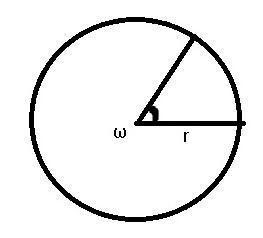Period and Angular Frequency - Definition, Formula, Unit, FAQs
Many forms of energy, such as light and sound, travel in waves, as we all know. The frequency, amplitude, and speed of a wave are all qualities that define it. Any specific wave in wave mechanics has parameters such as frequency, time period, wavelength, amplitude, and so on. This page explains frequency, time period, and angular frequency in great depth.
This Story also Contains
- Parameters of a Wave
- What is Wavelength?
- What is Frequency?
- What Is Time Period?
- What is Amplitude?
- Periodic Angular frequency

The number of complete cycles of waves passing a spot in unit time is defined as the angular frequency. The time is the amount of time it takes for a complete wave cycle to pass a spot. The angular frequency is defined as the angular displacement of any wave constituent per unit time. It depicts the displacement y of any element along a string travelling in the positive x-direction with respect to time for a harmonic wave. In this case, the string element goes up and down in a basic harmonic motion.
Also read -
Parameters of a Wave
A wave is a disturbance that travels through a medium transferring energy without transferring matter. To describe a wave fully, we use several parameters:
- Wavelength
- Frequency
- Frequency
- Time period
- Amplitude
What is Wavelength?
It is defined as the distance between two consecutive crests or troughs of a wave.
- It represents one complete wave cycle.
- Unit: meter (m)
What is Frequency?
Frequency meaning: In physics, frequency refers to the number of waves that pass-through a given point in one unit of time, as well as the number of cycles or vibrations that body in periodic motion goes through one unit of the time.
It is defined as the number of wave cycles passing a point in one second.
- Unit: hertz (Hz)
- $f=\frac{1}{T}$
What Is Time Period?
The time is the amount of time it takes for a complete wave cycle to pass a spot. Periodic angular frequency is defined as the angular displacement of any wave constituent per unit time.
The particles in sinusoidal wave motion travel about the mean equilibrium or mean location with time, as seen above. The particles rise until they reach their highest position, the crest, and then descend until they reach their lowest point, the trough. The cycle follows a predictable pattern. The formula for calculating the time is as follows:
T=2π/ω
Time period formula
The term "period" refers to the amount of time it takes for something to occur. Periodic angular frequency is a quantity that has a rate. Frequency is defined as the number of cycles per second. The term "period" refers to the number of seconds in the cycle.
Formula for time period =1/f, f =frequency
What is Amplitude?
The maximum displacement of a particle in the medium from its mean position.
It shows the strength or energy of the wave.
Unit: meter (m)
Periodic Angular frequency
The angular displacement of any wave element per unit time is known as angular frequency.

Angular frequency formula
$
\omega=2 \pi / T
$
is used to calculate the angular frequency physics. In radians per second, the angular frequency physics is measured. The frequency $f=1 / T$ is the inverse of the period. The number of complete oscillations per unit time is determined by the motion's frequency,
$
f=1 / T=\omega / 2 \pi
$
Omega in physics $(\omega)$
The frequency physics of angular movement per unit time is measured by angular frequency (also known as radial or circular frequency). The angular displacement of any wave element per unit time is known as angular frequency. In wave terminology, the angular frequency of a sinusoidal wave refers to the angular displacement of any element of the wave per unit of time. Omega is the symbol for it.
$
\omega=2 \pi / T
$
Oscillatory Motion:
When an object moves back and forth in a periodic pattern, it is said to be oscillating. An oscillating motion is like how a pendulum oscillates from one end to the other (to-and-fro) about its mean position and keeps repeating its motion.
Related Topics,
NCERT Physics Notes:
Also read:
- NCERT notes Class 11 Physics Chapter 14 Oscillations
- NCERT Solutions for Class 11 Physics Chapter 14 Oscillations
- NCERT Exemplar Class 11 Physics Solutions Chapter 14 Oscillations
Also, check-
Frequently Asked Questions (FAQs)
The rate of change of the waveform phase or the angular displacement of any element of the wave per unit time is referred to as the angular frequency
The rotational motion of any system occurs around the axis of rotation, and the system has a moment of inertia that seeks to counteract the change in motion.
In general, ω is the angular speed, or the rate at which an angle changes (as in a circular motion). The number of periodic oscillations or revolutions during a particular time period is equal to 1/T, or frequency (f). Angle speed, also known as angular frequency, refers to how much angle is covered in a given amount of time.
Natural frequency is measured in hertz, or occurrences per second, thus if it's five hertz, it implies it happens five times each second.
The angle in radians (degrees, revolutions) through which a point or line has been rotated in a specific sense about a specified axis is defined as angular displacement. It's the angle at which a body moves along a circular path. Motion ceases to be a particle when a rigid body rotates about its own axis.